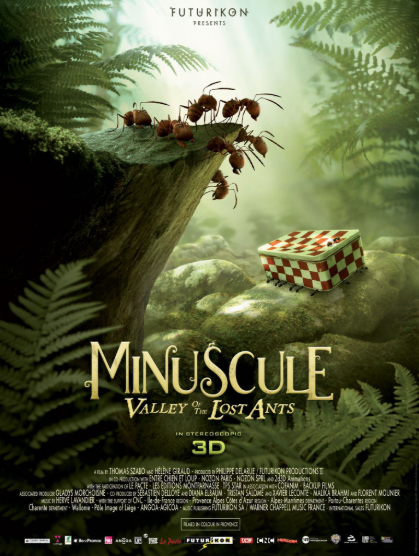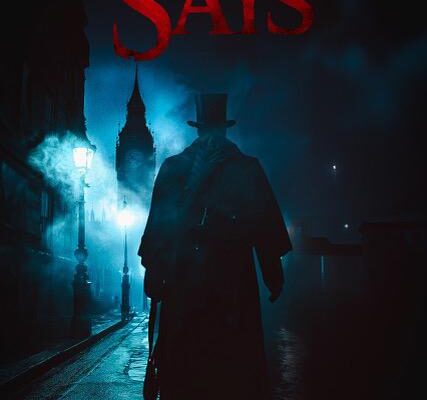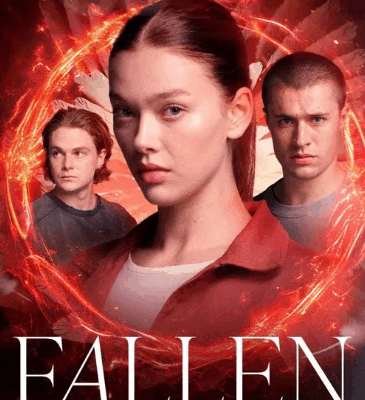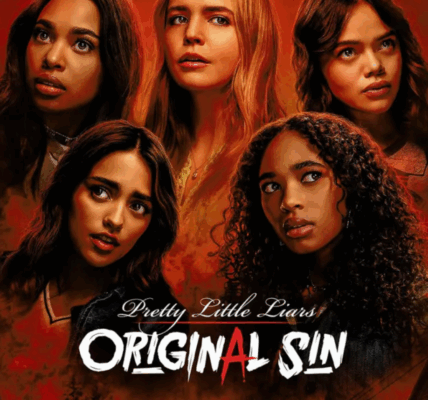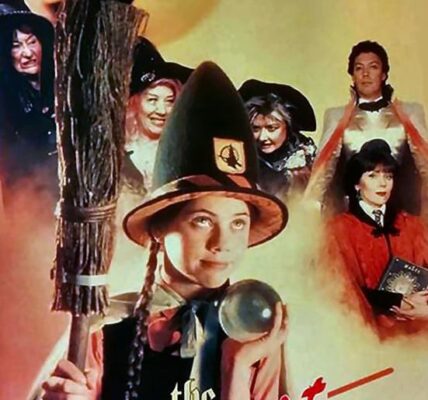1. Plot Summary
Set in a lush valley in southeastern France, Minuscule: Valley of the Lost Ants follows a young ladybug (named Cox) who, shortly after hatching, is bullied, injured (loses a wing), and separated from its family.
Unable to fly, Cox takes shelter in a tin box full of sugar cubes left behind from an abandoned human picnic. A colony of black ants find the sugar tin and begin to transport it toward their nest—with Cox inside. Along the way, they are pursued by red ants who want to steal the sugar. Many obstacles crop up: rivers, predators (a frog, lizards), natural hazards, but also moments of kindness and unexpected friendship. As Cox grows, physically and emotionally, he becomes more involved in the black ants’ plight and helps them defend their home. The film ends with a major confrontation, creativity in using “found” objects (things human left behind) for defense, and ultimately rebuilding.
2. Notable Elements
What makes Minuscule stand out:
- No spoken dialogue: The film tells its story entirely through visuals, sound effects, ambient sounds, insect noises, music. This makes the experience more universal and relies heavily on expressive animation.
- Stunning mix of live-action backgrounds + CGI insects: The backgrounds are real places (mountains, forests) shot realistically; the insects and props are animated and integrated in a way that feels natural. The contrast adds charm and makes small things become epic.
- Creative use of scale & objects: Ordinary human objects (a tin box, matchbox, fireworks, a soda can, etc.) become dramatic props. A river ride in a tin, using fireworks, slingshots etc., all elevate the “insect world” to feel adventurous.
- Visually beautiful and atmospheric: The film often feels like a nature documentary mixed with animated fairy-tale adventure. The cinematography, color palette, lighting, and sound design give it a gentle yet dynamic feel. Critics note the live action scenery in the French Alps (Ecrins national park) to be especially impressive.
- Humor and tension balanced: Although it’s “cute,” there are moments of threat (predators, the Red ant army siege, danger in natural hazards) that give suspense. But it never becomes overly dark—still very family-friendly.
What’s weaker:
- Pacing issues: Some reviews mention that certain parts drag, especially transition or “dream” sequences. The lack of dialogue might make these scenes feel slower for some viewers.
- Less character depth: Because the characters are insects with no spoken words, emotional depth relies entirely on physical expression / music. For audiences who want verbal dialogue or deep character arcs, this might feel light.
3. Themes and Messages
Some of the central themes and ideas:
- Friendship, belonging, found family: Cox is separated from its biological family but forms close bonds with the black ants. It’s about finding a place where one is valued.
- Courage and growing up: Cox starts weak (injured, unable to fly), but through trials and helping others, grows in confidence and ability.
- Cooperation vs conflict: The conflict with the red ants, and how the black ants (and Cox) use strategy, resourcefulness, and cooperation to face a stronger foe, show that unity and ingenuity matter.
- Using what you have / environmental awareness: The film often shows insects using human leftovers or natural elements, emphasizing making do with what’s around, and respecting nature (even as hazards are part of it).
- Silence / universal storytelling: By omitting standard dialogue, it emphasizes visual storytelling, empathy, and nonverbal cues—how much can be communicated without words.
Relating to holiday traditions or sentiments: While not a holiday film, it has themes that resonate in many celebratory/reflective periods: family, home, helping those in need, overcoming adversity, new beginnings. It could pair nicely with family viewing during holiday times, when themes of belonging and together-ness are strong.
4. Personal Impressions
What I enjoyed:
- I find the film enchanting. The blend of real world and tiny fantasy makes small insects seem epic. Scenes like navigating the sugar tin down a river, or the red ants’ siege, are surprisingly thrilling given the scale.
- The visual storytelling is superb. Without speech, you really feel for Cox; the emotional arcs (fear, loss, bravery) come through strongly.
- The ingenuity in design: using human objects (matchbox, fireworks, etc.) as tools/weapons adds both humor and creativity.
What was less strong for me:
- Occasionally the film slows in parts where nothing much seems to happen—moments that feel like breathing spaces but perhaps too long for younger viewers.
- Because there’s no dialogue, some emotional moments could feel vague. I sometimes wanted more explicit cues about character feelings (though arguably the film works better sometimes by leaving them ambiguous).
- For older viewers used to heavily plotted narratives or dialogue-driven character development, Minuscule may feel simple—though simplicity is largely part of its charm.
5. Audience Recommendations
Who might especially enjoy this movie:
- Families with children, especially younger kids (5-10), who enjoy visual stories, adventure, animals/insects.
- Fans of animation that emphasize atmosphere, art, sound, rather than lots of talking.
- Viewers who like nature documentaries, or who appreciate films that make the small big—insect POV, creative use of scale.
- Those who enjoy non-verbal storytelling (silent films, visual comedy, pantomime), or artistic/independent animation.
Might be less ideal for:
- Viewers who prefer faster pacing, heavy dialogue, or more complex character arcs.
- Those who expect big spectacle-style action; while there are adventurous sequences, it’s not a blockbuster explosion fest (though there is a climactic battle-type scene).
6. Conclusion & Rating
Overall, Minuscule: Valley of the Lost Ants is a delightful, beautifully made animated adventure that charms through its visuals, sound, and inventive storytelling. It’s gentle but exciting; simple but emotionally honest. It brings a kind of magic by making the smallest creatures and the smallest objects feel grand.
Final Recommendation: Definitely worth watching. It’s a great pick for family movie night, for lovers of animation and nature, or anyone who needs a film that’s uplifting, imaginative, and different in style.
Star Rating: ★★★★☆ (4.5/5)
Watch more:
